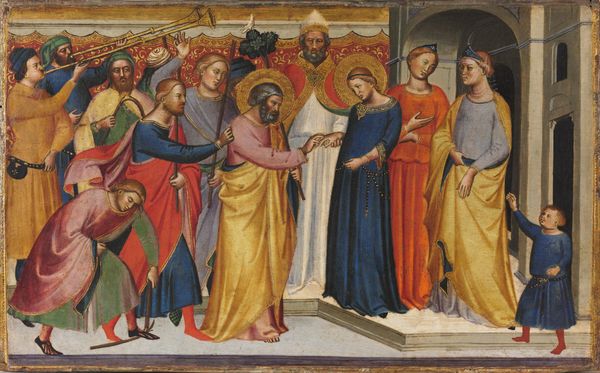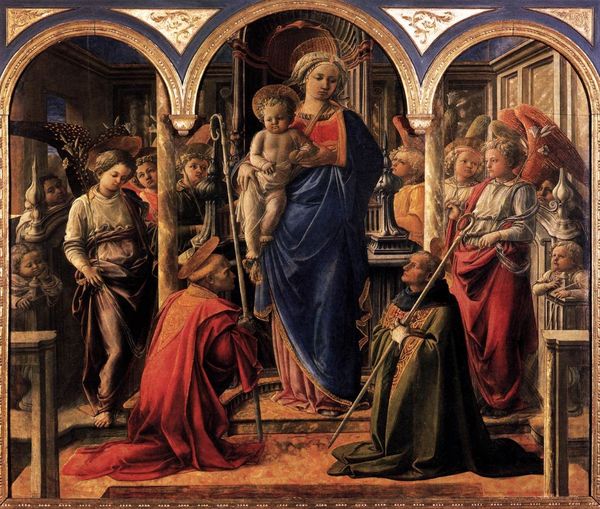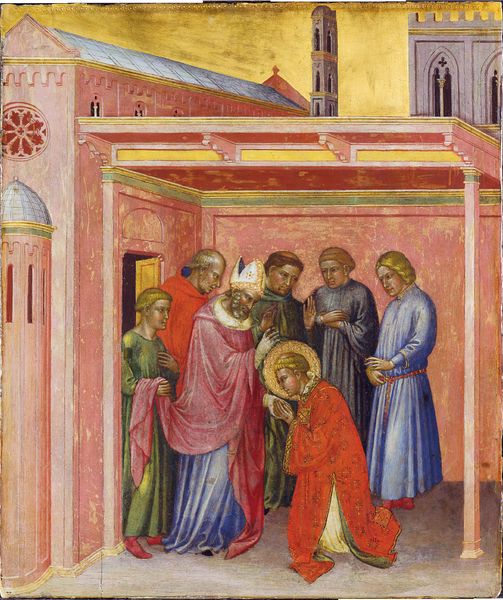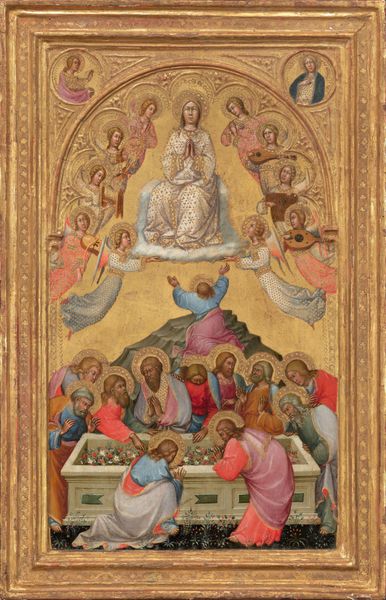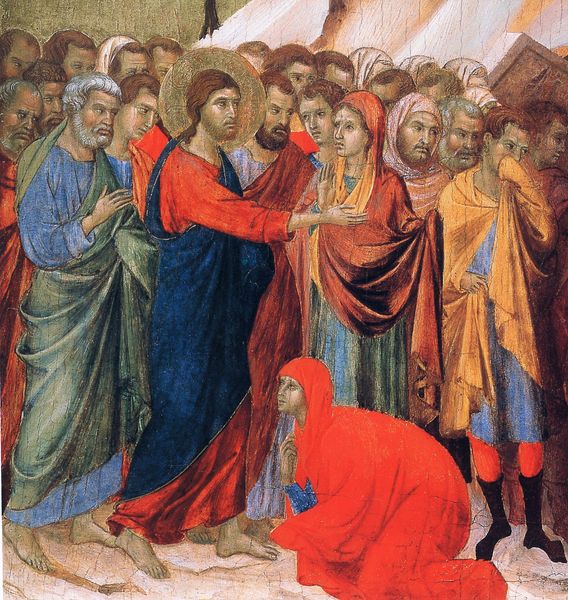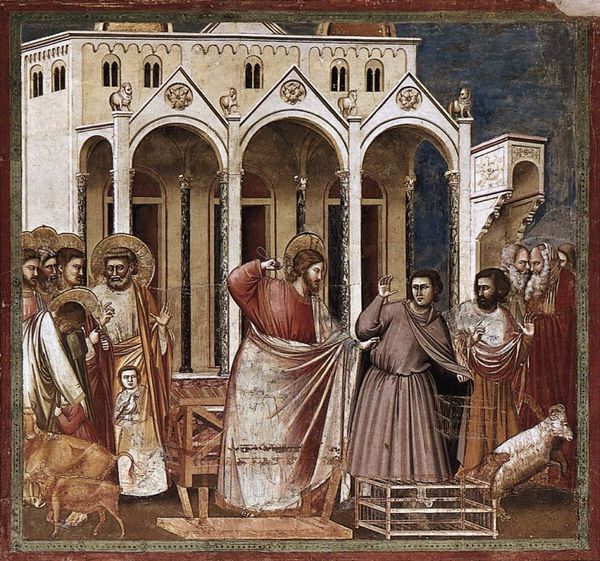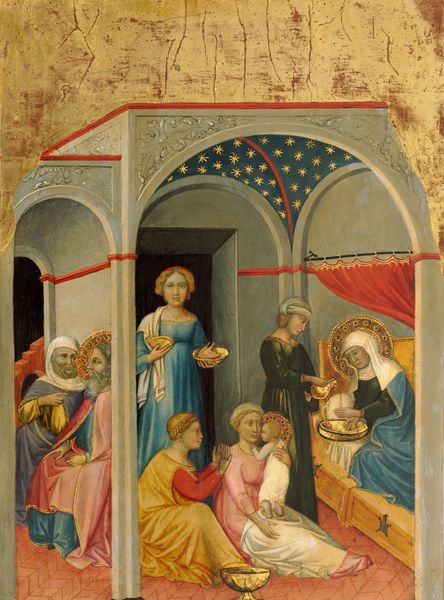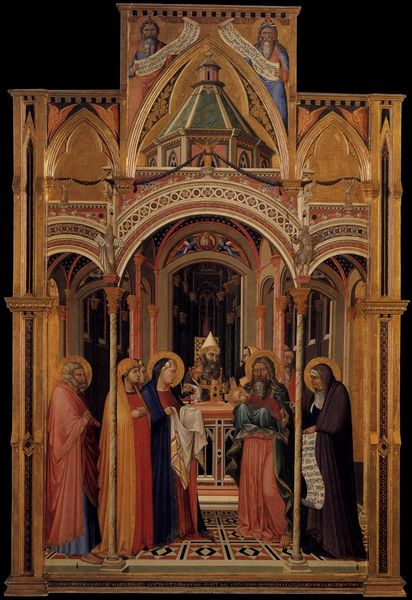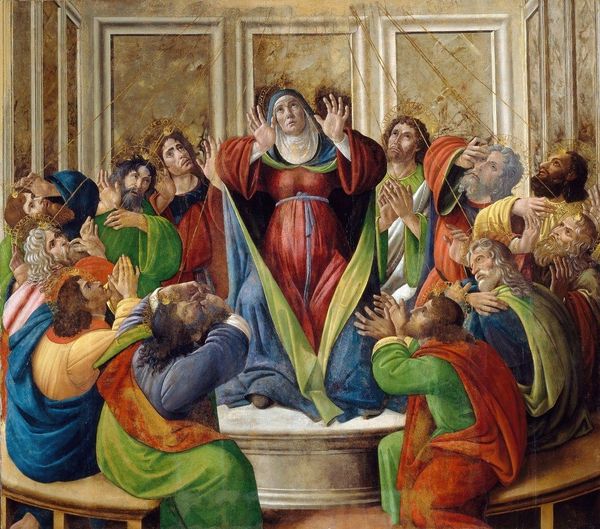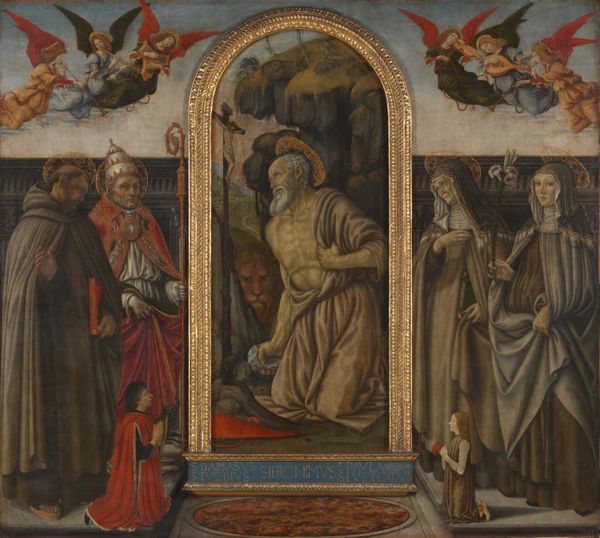
panel, tempera, painting
#
panel
#
narrative-art
#
tempera
#
painting
#
figuration
#
oil painting
#
history-painting
#
academic-art
#
italian-renaissance
#
early-renaissance
Dimensions: 69.4 x 58.6 x 0.6 cm
Copyright: Public Domain
Editor: Here we have Martino di Bartolomeo’s tempera on panel, "Dispute with the Libertines," circa 1390. I'm immediately drawn to the composition, how the figures are arranged and the central figure is brightly colored, demanding attention. What statements do you think this work makes? Curator: Well, this panel gives us a glimpse into the anxieties and power struggles present in 14th-century religious discourse. It portrays a public disputation. Look at how the figures on the margins are physically closer to the central figure, but visually pushed to the sides. Where is power situated in this image, and how does this reflect the real-world authority the Church held during this period? Editor: I see what you mean. It feels like it is about asserting dominance through intellectual debate, even physical proximity. But why focus on libertines? What did that term even mean then? Curator: That’s a crucial question. "Libertines" here likely refers to individuals challenging established Church doctrines or moral codes. By depicting this "dispute," the artwork reinforces orthodox views and warns against dissenting voices. Note how the painter emphasizes order, through geometric shapes and symmetry. Doesn’t this choice undermine notions of intellectual freedom? Editor: It does. The very structure seems designed to convey the 'rightness' of one side over the other. Are there other elements you think reinforce that interpretation? Curator: Definitely. Consider the body language: the calm authority of the central figure versus the somewhat agitated expressions of some listeners. Even the architecture, reminiscent of a court, underscores a sense of judgement. Is this a debate, or a condemnation? Editor: This makes me consider the work as less of a depiction and more of a piece of religious propaganda. I had initially just seen it as a history painting. Curator: Precisely. It urges us to consider how power structures shaped art, belief, and the suppression of alternative voices in the Early Renaissance. Editor: I never would have thought of that perspective. Thank you for your explanation. It gives me a lot to consider.
Comments
Join the conversation
Join millions of artists and users on Artera today and experience the ultimate creative platform.
